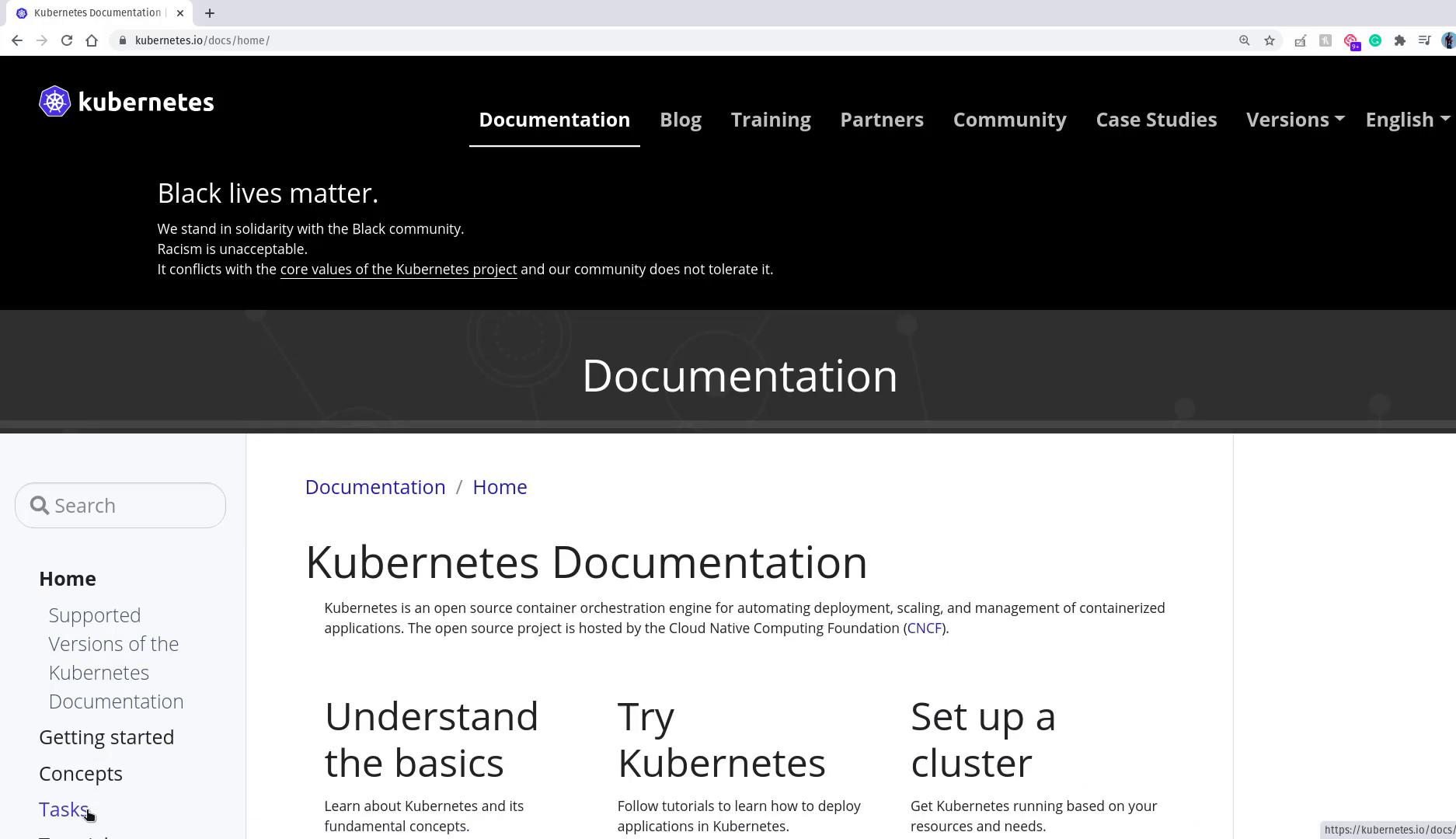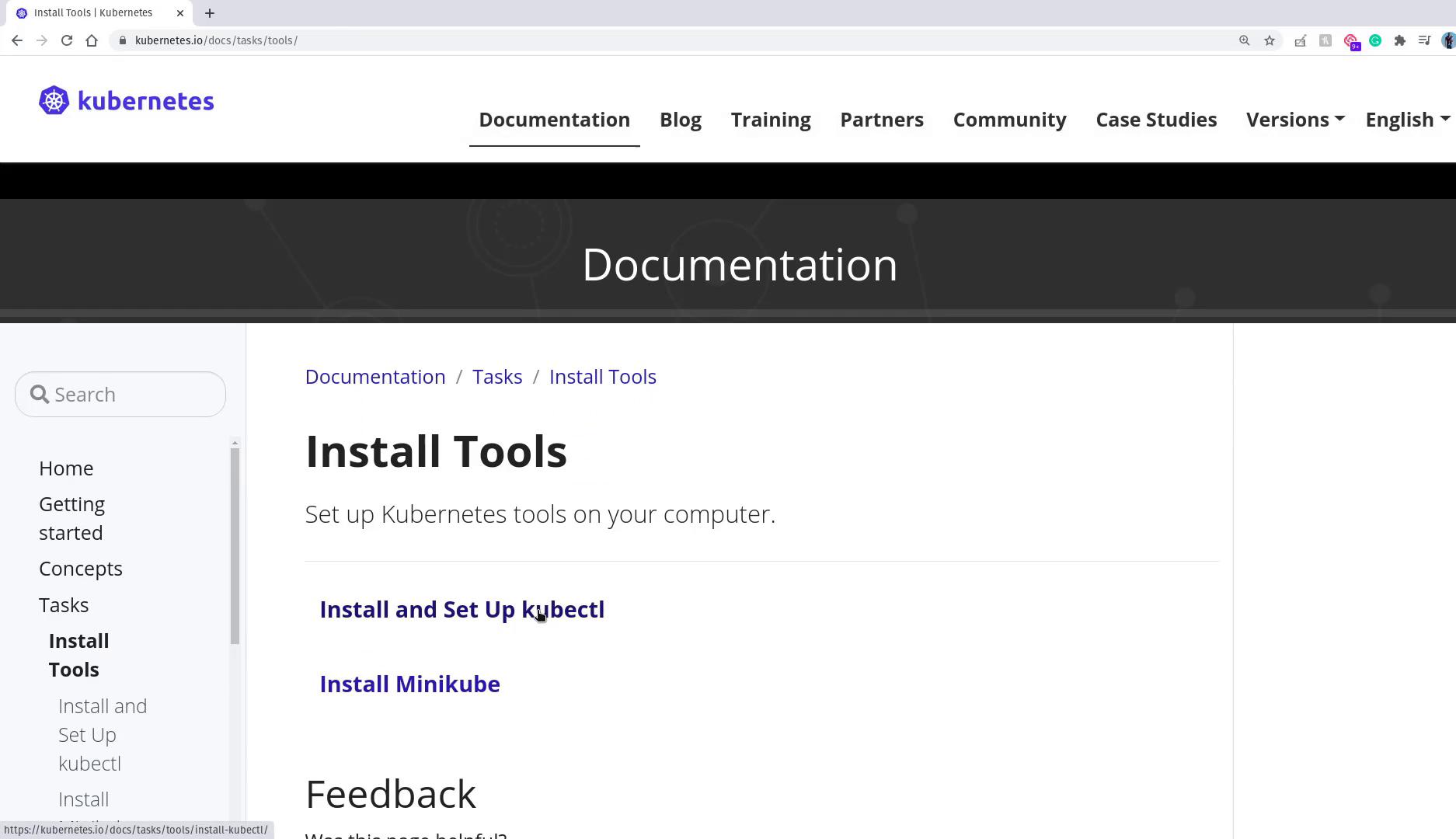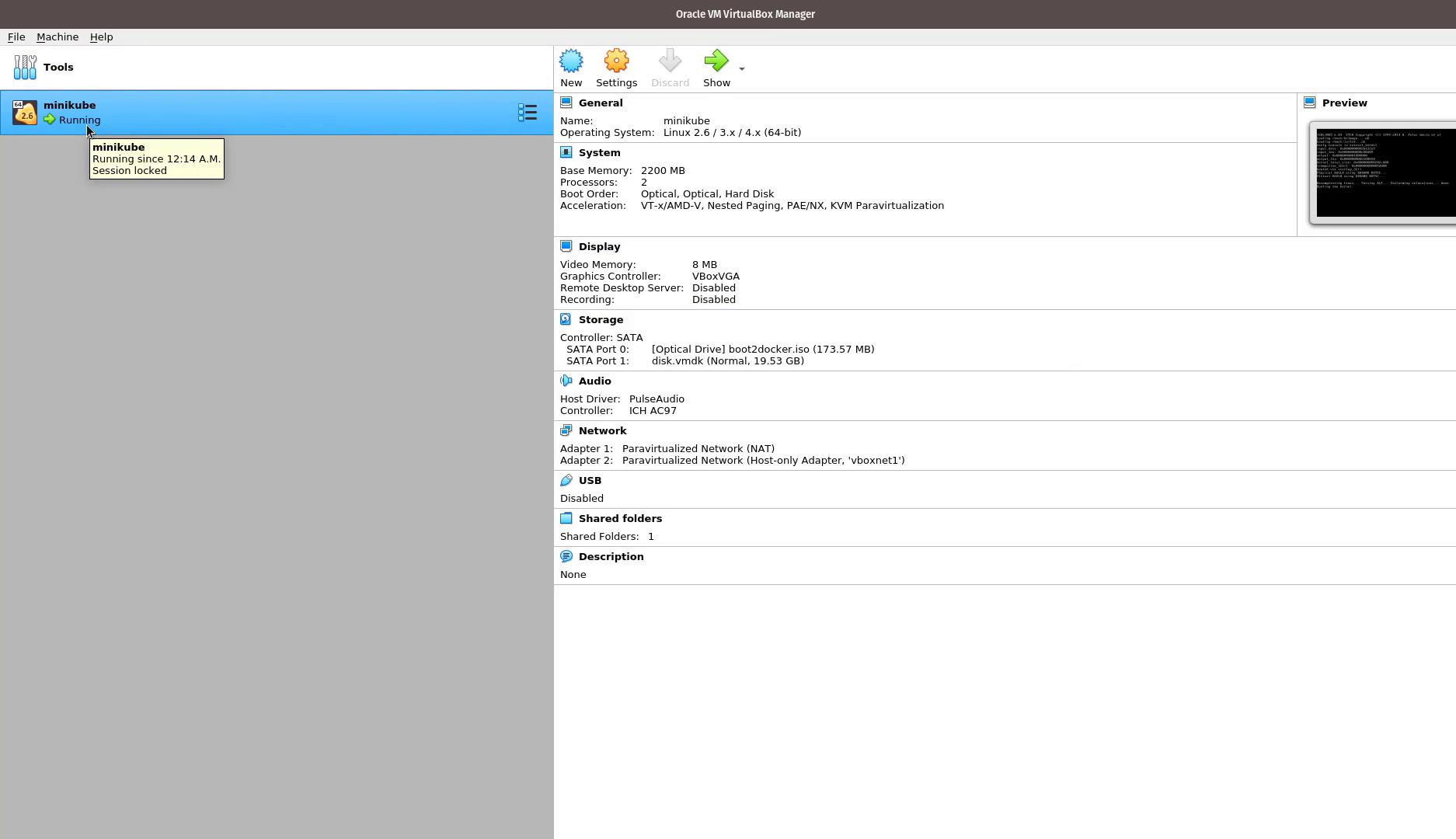Kubernetes for the Absolute Beginners - Hands-on Tutorial
Kubernetes Concepts
Demo Minikube Setup
In this lesson, we install a basic Kubernetes cluster using the Minikube utility. This beginner-friendly guide focuses on the core installation and configuration steps. For more advanced provisioning options such as using kubeadm, please refer to the CKA Certification Course - Certified Kubernetes Administrator.
We start by visiting the official Kubernetes website. Navigate to the Documentation section, then proceed to the Tasks and Install Tools area.

Installing kubectl
Before installing Minikube, it is essential to install the kubectl command-line tool. Kubectl manages your Kubernetes resources and interacts with your cluster once it is set up via Minikube. Installing kubectl first enables Minikube to configure it correctly during provisioning.

While you might see various ways of fine-tuning its name, they all refer to this single utility.
To download the latest stable version of kubectl, run:
curl -LO https://storage.googleapis.com/kubernetes-release/release/$(curl -s https://storage.googleapis.com/kubernetes-release/release/stable.txt)/bin/linux/amd64/kubectl
After the download is complete, make the binary executable and move it to a directory included in your PATH:
chmod +x ./kubectl
sudo mv ./kubectl /usr/local/bin/kubectl
Verify the installation by checking the client version. Note that until a cluster is running, you might encounter a message about the connection being refused:
kubectl version
Example output:
Client Version: version.Info{Major:"1", Minor:"18", GitVersion:"v1.18.5", GitCommit:"6503f8d8f769ace2f338794c914a96fc335df0f", GitTreeState:"clean", BuildDate:"2020-06-26T03:47:41Z", GoVersion:"go1.13.9", Compiler:"gc", Platform:"linux/amd64"}
The connection to the server localhost:8080 was refused - did you specify the right host or port?
Other installation methods are available in the Kubernetes documentation. For example, on Ubuntu you might use:
sudo apt-get update && sudo apt-get install -y apt-transport-https gnupg2
curl -s https://packages.cloud.google.com/apt/doc/apt-key.gpg | sudo apt-key add -
echo "deb https://apt.kubernetes.io/ kubernetes-xenial main" | sudo tee /etc/apt/sources.list.d/kubernetes.list
sudo apt-get update
sudo apt-get install -y kubectl
Verifying Virtualization Support
Before installing Minikube, ensure virtualization is enabled on your machine. This check is essential regardless of whether you are on Linux, Windows, or macOS. On Linux, you can check for the necessary virtualization flags (vmx for Intel or svm for AMD) with the following command:
grep -E --color 'vmx|svm' /proc/cpuinfo
Virtualization Disabled?
If no output is returned from the command above, virtualization may be disabled in your BIOS settings. Consult your laptop's manual or search online using your specific model to enable virtualization.
Installing Minikube
After installing kubectl and verifying that virtualization is enabled, the next step is to install Minikube. On Linux, you typically choose between two hypervisors: VirtualBox or KVM. In this lesson, VirtualBox is the chosen hypervisor because of its cross-platform availability (Linux, Windows, and macOS) and ease of resetting via snapshots.
If VirtualBox is not installed on your system, download the appropriate package from the VirtualBox website. For systems using yum (such as CentOS or RHEL), install VirtualBox with:
yum install VirtualBox-6.1
Once VirtualBox is installed, launch it to see its interface. The image below shows VirtualBox with no running virtual machines—a new one will appear when Minikube starts the cluster.

Downloading and Installing Minikube
Download the latest Minikube binary and make it executable:
curl -Lo minikube https://storage.googleapis.com/minikube/releases/latest/minikube-linux-amd64 && chmod +x minikube
Then, add Minikube to your PATH by installing it to /usr/local/bin:
sudo mkdir -p /usr/local/bin/
sudo install minikube /usr/local/bin/
Starting the Minikube Cluster
With both kubectl and Minikube now installed, you can start your local Kubernetes cluster. Specify the virtualization driver—in this example, VirtualBox—with the following command:
minikube start --driver=virtualbox
Minikube will download the necessary ISO image and Kubernetes binaries (for example, Kubernetes v1.18.3) to set up your cluster. You will notice a new virtual machine named "minikube" appear in VirtualBox once the provisioning process begins.
Example session output:
admin@ubuntu-server kubernetes-for-beginners # curl -Lo minikube https://storage.googleapis.com/minikube/releases/latest/minikube-linux-amd64 && chmod +x minikube
admin@ubuntu-server kubernetes-for-beginners # ls -ld /usr/local/bin/
drwxr-xr-x 2 root root 4096 Jul 11 00:03 /usr/local/bin/
admin@ubuntu-server kubernetes-for-beginners # sudo install minikube /usr/local/bin/
admin@ubuntu-server kubernetes-for-beginners # minikube start --driver=virtualbox
minikube v1.12.0 on Debian bullseye/sid
Using the virtualbox driver based on user configuration
Downloading VM boot image ...
> minikube-v1.12.0.iso.sha256: 65 B / 65 B [--------------] 100.00%
> minikube-v1.12.0.iso: 173.57 MiB / 173.57 MiB [--------------] 100.00%
Starting control plane node minikube in cluster minikube
Downloading Kubernetes v1.18.3 preload ...
> preloaded-images-k8s-v4-v1.18.3-docker-overlay2-amd64.tar.lz4: 176.78 MiB
In the VirtualBox Manager, you will see the "minikube" virtual machine running with 2 CPUs and 2 GB of RAM.

After the setup completes, kubectl is automatically configured to use the new Kubernetes cluster.
Verifying the Cluster
To ensure everything is functioning correctly, check the status of your Minikube cluster with:
minikube status
Expected output:
minikube
type: Control Plane
host: Running
kubelet: Running
apiserver: Running
kubeconfig: Configured
Next, verify that the node is ready by listing all nodes:
kubectl get nodes
Expected output:
NAME STATUS ROLES AGE VERSION
minikube Ready master 88s v1.18.3
Deploying a Sample Application
With your cluster up and running, deploy a sample application to verify that the environment is fully operational.
1. Create a Deployment
Deploy a sample echoserver application with the following command:
kubectl create deployment hello-minikube --image=k8s.gcr.io/echoserver:1.10
You should see a confirmation message:
deployment.apps/hello-minikube created
2. Verify the Deployment
Check the deployment status with:
kubectl get deployments
Expected output:
NAME READY UP-TO-DATE AVAILABLE AGE
hello-minikube 1/1 1 1 22s
3. Expose the Deployment as a Service
Expose the deployment on port 8080 using a NodePort service:
kubectl expose deployment hello-minikube --type=NodePort --port=8080
To obtain the URL of the exposed service, run:
minikube service hello-minikube --url
Open the URL in your browser to view details of the application. Although the interface may be basic, this confirms your cluster's functionality.
4. Cleaning Up
After testing, remove the service and deployment:
kubectl delete service hello-minikube
kubectl delete deployment hello-minikube
You can verify that the pod is terminating with:
kubectl get pods
Example output:
NAME READY STATUS RESTARTS AGE
hello-minikube-64b64df8c9-4vcrm 1/1 Terminating 0 3m3s
Conclusion
Your Minikube-based Kubernetes cluster is now operational, and you have successfully deployed and exposed a sample application. This setup forms a solid foundation for upcoming lessons where more complex deployments and Kubernetes concepts will be explored.
Happy learning, and see you in the next lesson!
Next Steps
Consider exploring additional Kubernetes resources such as the Kubernetes Documentation and tutorials to deepen your understanding of cluster management and container orchestration.
Watch Video
Watch video content